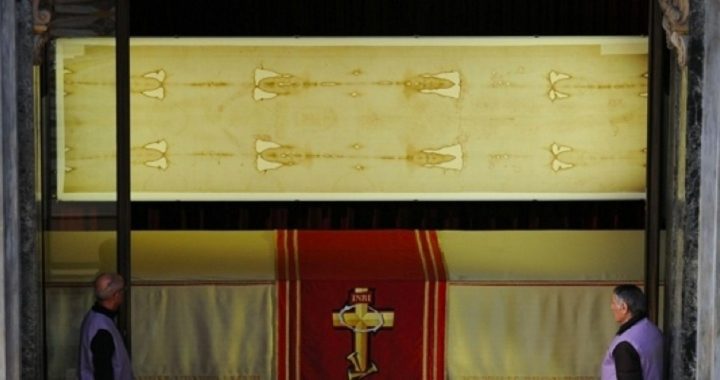
Scientists say new research on the Shroud of Turin confirms that the fabric many Christians believe is the burial cloth of Jesus Christ does indeed date roughly to the historical time of Christ. While some scientists who have examined the shroud argue that it is a clever medieval forgery, scientists involved in the project say the latest research, conducted on fibers taken from the 14-foot cloth in 1988, dates the age of the shroud at between 300 B.C. and 400 A.D.
The London Telegraph reported that the latest group of scientists to look at the shroud used infra-red light and spectroscopy — a technique that measures radiation — to test the fiber samples. Giulio Fanti, a professor of mechanical and thermal measurement at Italy’s Padua University and one of the scientists involved in the project, has published a book on the research, entitled (in English) The Mystery of the Shroud. Both Fanti and journalist Saverio Gaeta, who co-authored the book, are devout Catholics, leading some to question the objectivity of the findings they publish in the book.
The latest results are at odds with findings from earlier carbon-dating experiments conducted on the same fiber samples in 1988. “Those tests, conducted by laboratories in Oxford, Zurich, and Arizona, appeared to back up the theory that the shroud was a clever medieval fake, suggesting that it dated from 1260 to 1390,” reported the Telegraph.
But those findings have been challenged by Fanti and fellow scientists, who say the earlier carbon-dating research was flawed through the testing of fibers contaminated by fabric that was used by craftsmen in the Middle Ages to repair the Shroud after it was damaged by fire.
“We carried out three alternative dating tests on the shroud, two chemical and one mechanical, and they all gave the same result and they all traced back to the date of Jesus, with a possible margin of error of 250 years,” Fanti said in remarks to CNN.
The linen cloth has been a source of both mystery and inspiration to individuals for centuries, showing as it does the imprint of a man with long hair and beard, and with wounds that track with those the New Testament Gospels say Jesus received before and during crucifixion. “Scientists have never been able to explain how the image of a man’s body, complete with nail wounds to his wrists and feet, pinpricks from thorns around his forehead and a spear wound to his chest, could have formed on the cloth,” reported the Telegraph. “Mr Fanti said the imprint was caused by a blast of ‘exceptional radiation,’ although he stopped short of describing it as a miracle.”
The most recent news concerning the Christian relic is certain to renew debate about its authenticity, and while the Catholic Church has never taken a firm stand on the authenticity of the shroud, Pope Benedict was quoted as saying that the image on the cloth “reminds us always” of the suffering of Christ.
Similarly, Pope Francis offered his own endorsement of the shroud in a video message for a special televised display of the relic that aired March 30 from the Cathedral of Saint John the Baptist in Turin, where the shroud is held. While offering no comment on the authenticity of the cloth, Francis said that the image on the shroud nonetheless “speaks to our heart and moves us to climb the hill of Calvary, to look upon the wood of the Cross, and to immerse ourselves in the eloquent silence of love.”
The pope said that the disfigured face represented on the cloth “resembles all those faces of men and women marred by a life which does not respect their dignity, by war and violence which afflict the weakest. And yet, at the same time, the face in the shroud conveys a great peace; this tortured body expresses a sovereign majesty.”
The Associated Press noted that the shroud, which is kept in a bulletproof, climate-controlled case in the cathedral at Turin, has been open to public view only on rare occasions. “The last time was in 2010 when more than two million people lined up to pray before it and then-Pope Benedict XVI visited,” reported AP. Before the March 30 exhibition, the last time the shroud was shown via live television was in 1973 at the request of Pope Paul VI, the Vatican said.
For those interested in exploring the shroud in greater detail, a “Shroud 2.0” smart phone app has been created that features high-definition photographs of the relic, guided tours of the most relevant features of the shroud, and documents detailing the history of the cloth and the research that has been done on it. “For the first time in history the most detailed image of the shroud ever achieved becomes available to the whole world, thanks to a streaming system which allows a close-up view of the cloth,” advertises the app’s creator. “Each detail of the cloth can be magnified and visualized in a way which would otherwise not be possible.”
Photo of Shroud of Turin: AP Images



